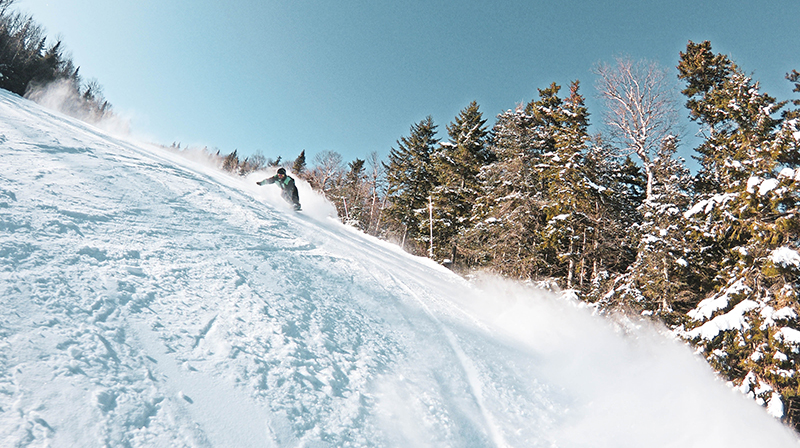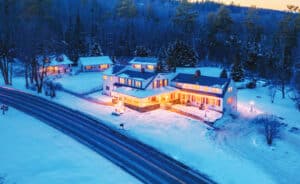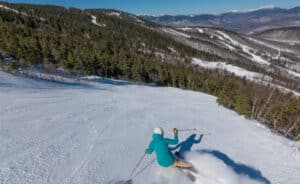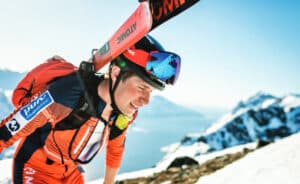
As a young man growing up in Quebec, Tom Corcoran knew at least two things about skiing: that Europeans were bound to be dominant over skiers in the Americas; and that if ski areas gave up on race training, it would only get worse, the subtle technique at the center of skiing — that hard carved turn performed as quick as possible by punching the ski edge — lost.
As credentials for what he preached about, Corcoran, in the 1960 Olympics at Squaw Valley — turned in a fourth-place finish in giant slalom for the U.S. Ski Team, the best Olympic GS result by an American until Bode Miller scored silver in 2002. What turned Corcoran into the amazing turner he was for his age was mastering the ice steeps of the Eastern Townships on technical skis.
Decades later, as a Harvard MBA but no less passionate about skiing, Corcoran was able to follow his dream and build a ski area in central New Hampshire — Waterville Valley.
At Harvard, Corcoran met and befriended the Kennedy family, and he was especially close with Robert, who had perhaps more enthusiasm than experience. It was the Kennedys who backed the loans to make Waterville Valley happen. Whether Corcoran ever actually coached his friend has never been written, but it’s clear Kennedy preferred one central trail where he practiced diligently on the slopes. For starters, Corcoran discouraged stopping mid-run. “Skiing the whole run stretches you,” he used to point out to members of the Black & Blue Trail Smashers, a club of amateur racers he started at Waterville. “If you stop to regroup, you’re not teaching yourself anything, and you’re not going to learn much.”



